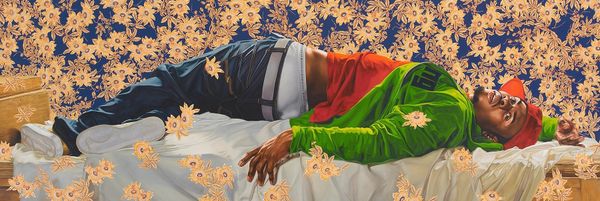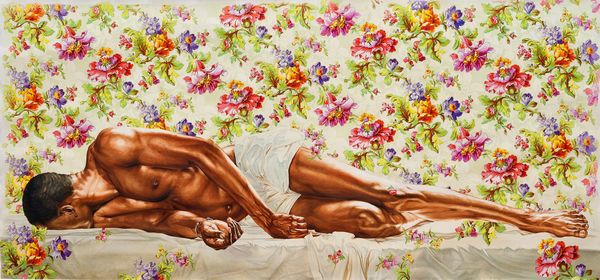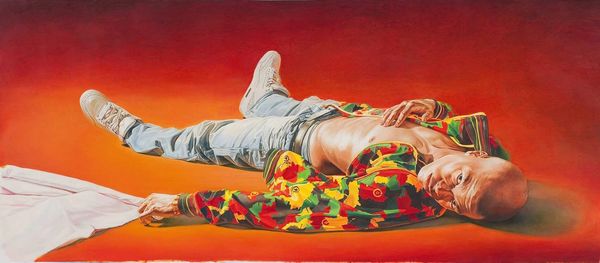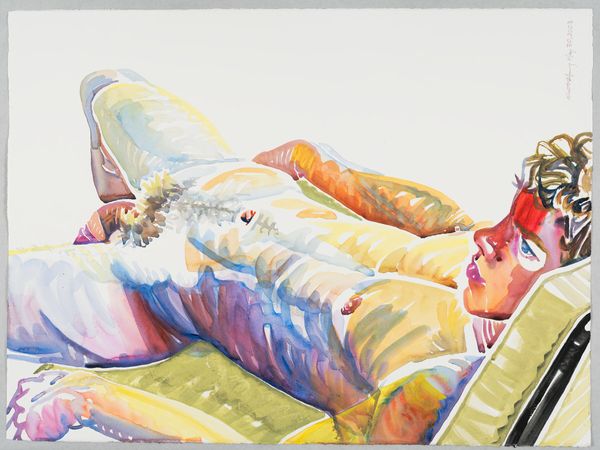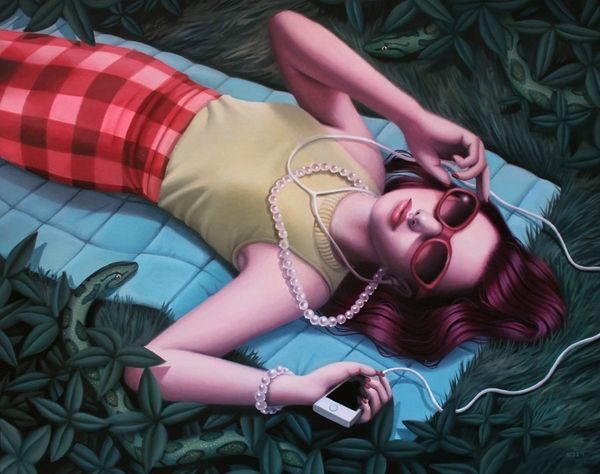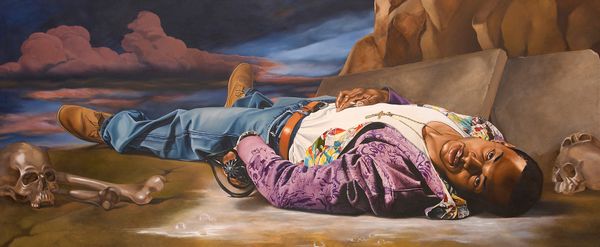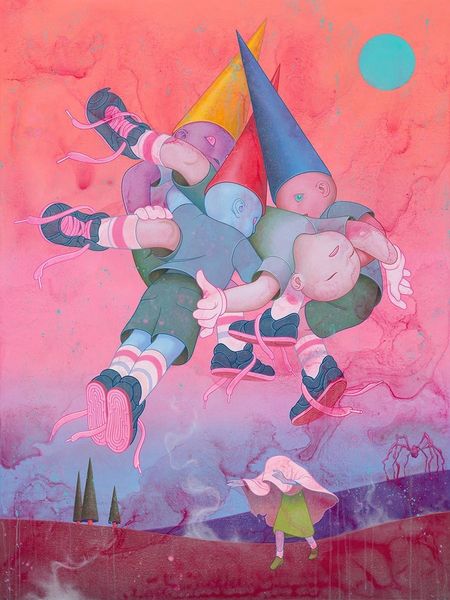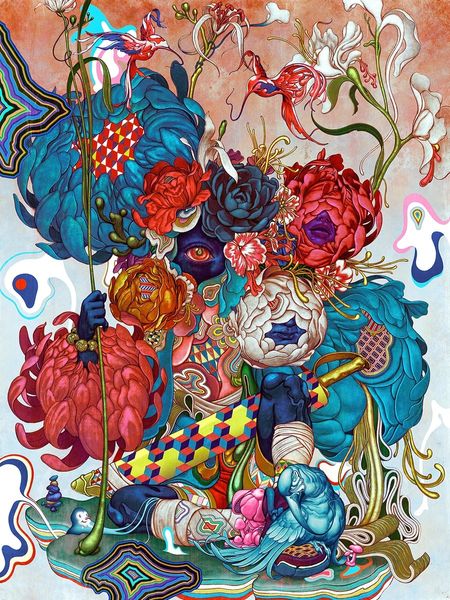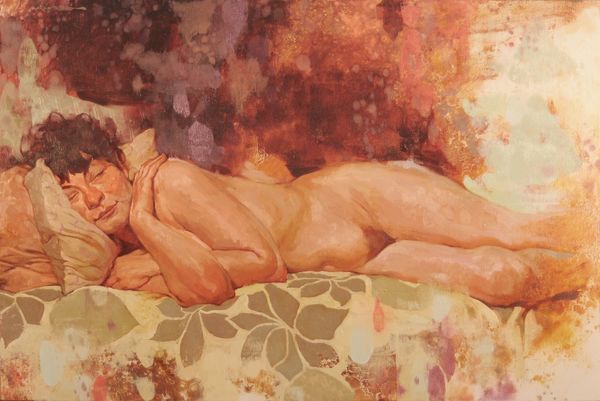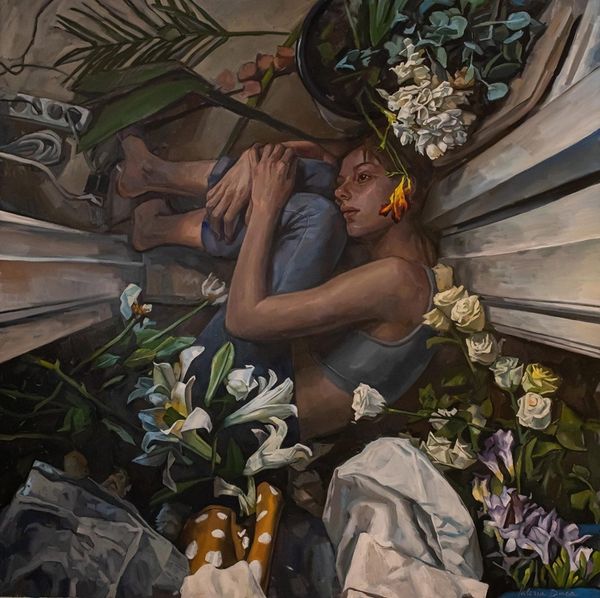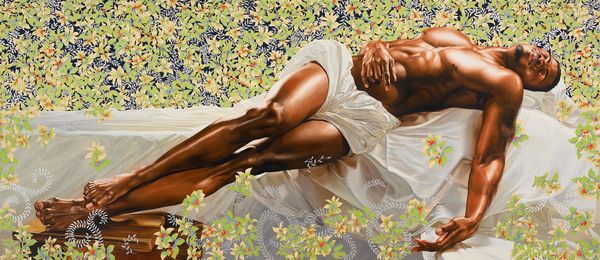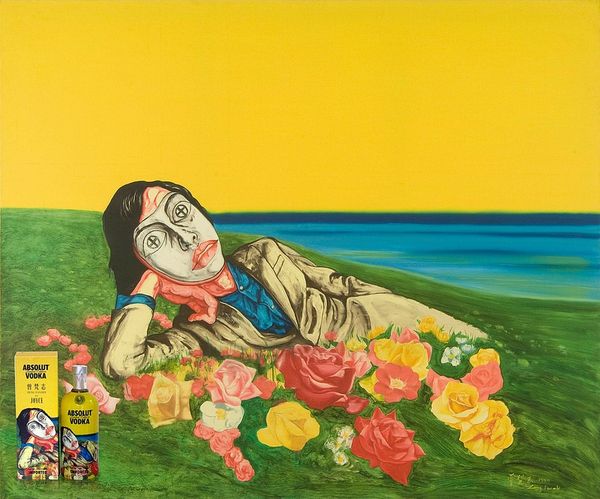
#
pattern-and-decoration
Copyright: Modern Artists: Artvee
Curator: Kehinde Wiley’s “Femme Piquee Par Un Serpent II,” crafted in 2010, presents a powerful figure against a striking background. It is executed in oil. My initial reading? Decadent, unsettling. A strangely beautiful collision of ease and vulnerability. Editor: It’s interesting how Wiley positions this figure, recumbent yet defiant, amidst that vibrant wallpaper. Considering its title, a possible reference to classical art is evoked. Wiley is known for taking figures directly from the streets of urban communities, casting everyday people of color into the aesthetic of the Old Masters, thus directly confronting art history's exclusivity. Curator: Absolutely. The art historical allusion is unavoidable and that contrast, of course, is intentional. The wallpaper becomes more than mere backdrop; it’s a suffocating tapestry that both celebrates and confines him. Look closely at the play of the lines, the geometric composition within the swirling, organic motifs. Editor: In viewing that visual vocabulary in its social and political setting, this opulent pose also echoes historical representations of power and leisure which traditionally excluded Black figures. The inclusion and assertion is quite profound in a space that had always been prohibited. It forces viewers to reassess what power and elegance signifies in modern context. Curator: The interplay of texture and color reinforces that. His streetwear juxtaposed with the hyper-real floral arrangement creates tension. I'm fascinated by the surface quality itself - the oil paint manipulated to mimic both smooth skin and coarse fabric, while still rendering them "larger than life." There are also hints of something, possibly a floral design on the bedding itself; note how it doesn't quite match but amplifies the impact. Editor: Precisely. Wiley's strategic fusion of Western art traditions with modern black culture is a sharp statement on race and identity. This work reflects conversations within Afrofuturism where these imagined futures demand reclamation of present-day social dynamics in order to project empowerment into the unknown and what we believe is possible. Curator: Seeing those varied textures, then thinking of afrofuturism, is fascinating because that reading shows how this piece opens onto a broader space of self determination where Black aesthetics are central and always valued. Editor: I agree. Wiley makes an important move that demands historical reckoning, not to leave audiences paralyzed but engaged with current narratives.
Comments
No comments
Be the first to comment and join the conversation on the ultimate creative platform.
